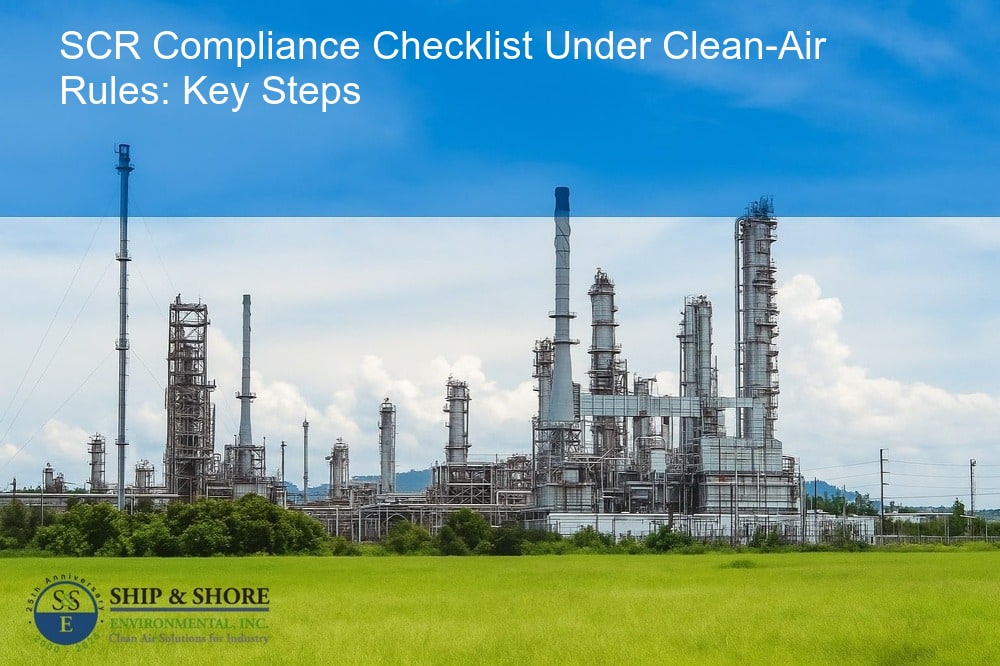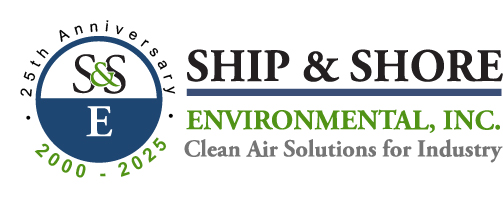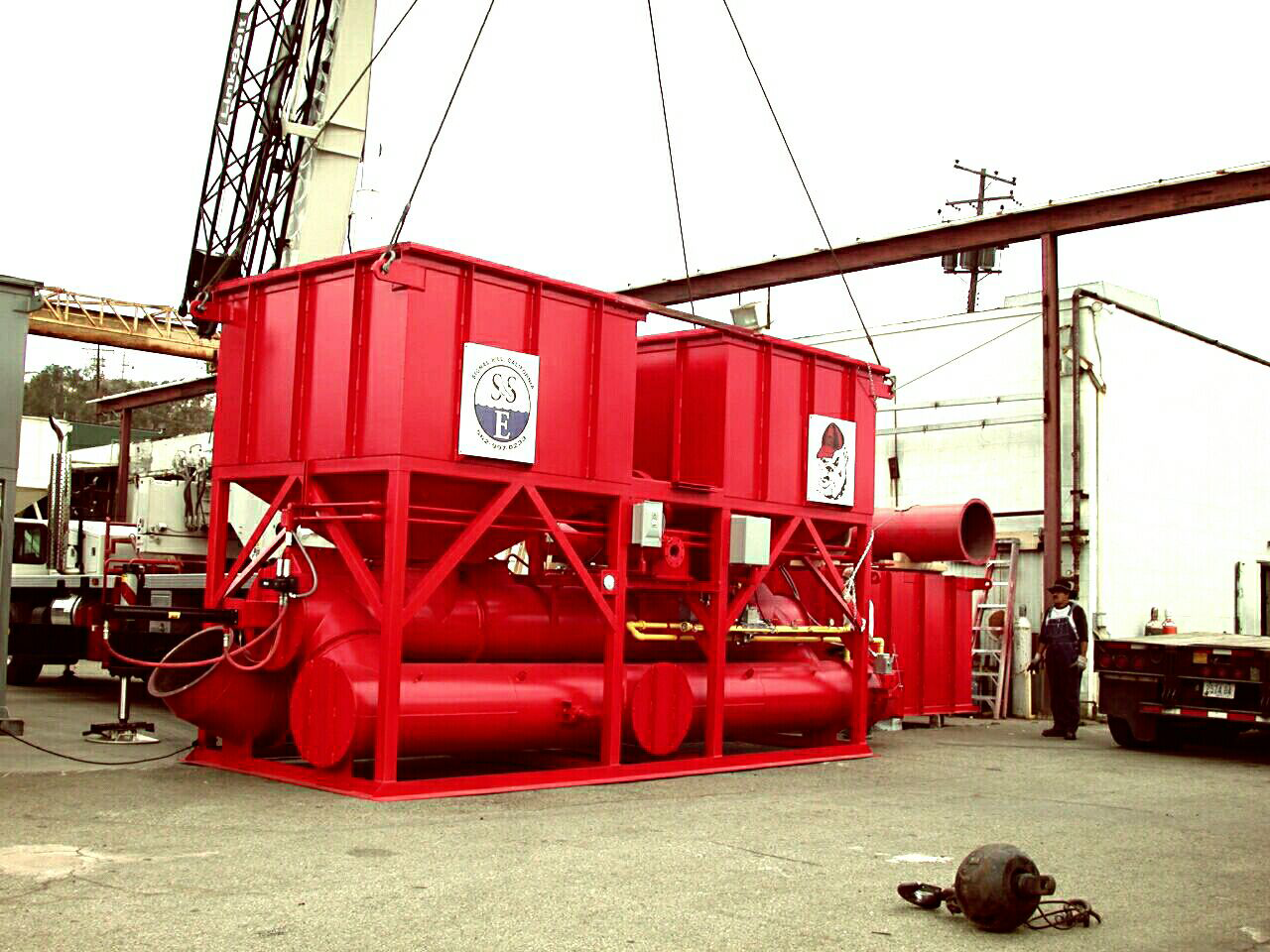
Essential SCR Compliance Checklist Under Clean-Air Rules
October 6, 2025 6:07 amUnderstanding SCR Compliance: An Overview
At Ship & Shore Environmental, Inc., we recognize the importance of maintaining compliance with environmental regulations. One critical aspect of this involves adhering to the Selective Catalytic Reduction (SCR) compliance checklist under clean-air rules. This specialized compliance ensures that industries meet stringent emission standards, thereby reducing their environmental footprint and enhancing overall sustainability. The journey to full compliance can be complex, which is why a well-structured checklist is essential for achieving and maintaining these regulatory standards.
The Role of Clean-Air Rules in Industrial Protocols
Clean-air rules are designed to limit the amount of harmful substances released into the atmosphere by industrial activities. These regulations are crucial for protecting public health and the environment. For industries that rely on heavy machinery and extensive manufacturing processes, compliance with these rules is non-negotiable. SCR systems play a pivotal role in reducing nitrogen oxide (NOx) emissions, which are significant pollutants. Our focus on clean-air rules ensures that we contribute to a cleaner, healthier planet while meeting our clients’ operational needs.
Why You Need an SCR Compliance Checklist Under Clean-Air Rules
Adhering to an SCR compliance checklist under clean-air rules is essential for several reasons. First and foremost, it ensures that your operations are in line with federal, state, and local environmental regulations. Non-compliance can result in hefty fines, legal actions, and potential shutdowns, which can be costly and damaging to your business reputation. Additionally, compliance can lead to more efficient operations, as well-maintained SCR systems typically function more effectively. This not only reduces emissions but also enhances fuel efficiency and lowers operating costs.
Another critical reason for following a compliance checklist is the technological advancement and preventive maintenance it promotes. By routinely inspecting and updating your SCR systems, you ensure that they remain in optimal working condition. This proactive approach minimizes the risk of unexpected failures and extends the lifespan of your equipment. Ultimately, remaining compliant is not just a regulatory requirement but a smart business strategy that fosters sustainability and operational excellence.
Breaking Down the SCR Compliance Checklist: Key Components
At Ship & Shore Environmental, Inc., we recognize the intricacies involved in ensuring Selective Catalytic Reduction (SCR) compliance under clean-air rules. The SCR compliance checklist under clean-air rules is a significant tool that helps industries adhere to regulatory standards. Specifically, this checklist encompasses several critical components aimed at optimizing emissions reduction.
First and foremost, proper documentation is essential. Records of system design, assessment reports, and maintenance logs must be meticulously maintained. This documentation provides a clear roadmap for inspections and audits.
Additionally, calibration of monitoring instruments plays a fundamental role. Ensuring that all emissions monitoring instruments are accurately calibrated guarantees that the data collected is reliable and compliant with regulatory requirements. Timely calibration helps detect deviations from the expected performance range.
Moreover, regular maintenance is crucial for effective SCR operation. Routine checks and servicing minimize chances of system failures, thus ensuring uninterrupted compliance. Proper maintenance protocols address both preventive and corrective measures to keep the SCR system in optimal working condition.
How to Ensure SCR Compliance Under Clean-Air Rules
To maintain SCR compliance under clean-air rules, several strategic steps must be taken. Implementing a robust internal auditing system is the initial step. Regular, detailed audits help in identifying potential non-compliance issues before they escalate into major problems.
Furthermore, investing in staff training is indispensable. Employees should be well-versed in SCR operation and maintenance protocols. Training ensures that every team member is capable of performing their roles effectively, thus upholding compliance standards.
Incorporating advanced technology is another critical aspect. Utilizing state-of-the-art emissions control systems enhances compliance capabilities. Continuous emissions monitoring systems (CEMS) and advanced data analytics play an integral role in providing real-time insights and facilitating proactive adjustments.
Case Studies of Successful SCR Compliance Methods
Examining case studies offers valuable insights into effective SCR compliance strategies. Various industries have successfully implemented SCR systems by adhering to a structured approach. Below, we highlight some key practices:
- Comprehensive Planning: Industries that prioritize detailed planning and feasibility studies tend to achieve higher compliance rates. Understanding specific requirements and potential challenges beforehand allows for better decision-making.
- Continuous Monitoring: Real-time monitoring of emissions helps in promptly identifying anomalies. This proactive approach assists in mitigating risks associated with non-compliance.
- Adaptive Maintenance Schedules: Implementing a flexible maintenance schedule that adapts to operational demands ensures the SCR system remains efficient. Tailoring maintenance activities based on monitored data enhances system reliability.
- Environmental Integration: Companies integrating SCR systems within their broader environmental sustainability initiatives find it easier to maintain compliance. This holistic approach aligns emissions reduction with overall environmental goals.
Did you know that following an SCR compliance checklist can prevent hefty fines and ensure industries meet stringent clean-air rules, promoting both environmental and business sustainability?
The Critical Importance of Following the SCR Compliance Checklist
Ensuring that we meticulously adhere to our SCR compliance checklist under clean-air rules is vital for numerous reasons. First and foremost, adopting this checklist helps mitigate the risk of non-compliance, which can lead to severe financial penalties and operational disruptions. Moreover, by following the SCR compliance checklist, we ensure that our operations contribute positively to the environment, reinforcing our commitment to sustainable practices. These guidelines are not just regulatory hurdles but essential checkpoints that help us maintain high standards in our industrial protocols.
Benefits for Industries Remaining Compliant with Clean-Air Rules
There are several compelling benefits that industries can seize by remaining compliant with clean-air rules. Chief among these is the enhancement of our corporate reputation. As businesses, when we demonstrate our commitment to environmental stewardship through robust compliance, it builds trust and goodwill among our stakeholders, clients, and the larger community. Operational efficiency also sees an uptick, thanks to the meticulous planning and regular audits required by the SCR compliance checklist. Furthermore, companies that maintain compliance are less likely to encounter unexpected downtimes or costly equipment failures, saving both time and money. The case studies of industry leaders who have successfully implemented these checklists show significant improvements in both environmental and economic performance, highlighting the dual benefits of adherence.
The Future of SCR Compliance: Sustainability and Advancements
Looking ahead, the landscape of SCR compliance is poised for significant advancements. Technological innovations are expected to make compliance more manageable and more precise. Real-time monitoring systems, for instance, can provide immediate feedback and data, allowing for quicker adjustments and better overall management. Sustainability is no longer just a buzzword but a core component of long-term business strategies. By staying updated with the latest developments and continuously refining our SCR compliance checklist under clean-air rules, we not only stay ahead of regulatory changes but also spearhead efforts toward a sustainable future. Embracing the advancements in compliance technology means we can better measure our impact and make informed decisions that benefit both our operations and the environment.
FAQ
Why is it crucial to follow the SCR compliance checklist?
Adhering to the SCR compliance checklist is critical to prevent the risk of regulatory penalties and to ensure operational continuity. Additionally, it demonstrates our dedication to environmental sustainability and upholds high standards for our industrial processes.
What benefits do industries gain from adhering to clean-air regulations?
Companies dedicated to maintaining compliance with clean-air protocols can reap the rewards of enhanced corporate reputation, operational efficiency, and reduced risk of unplanned downtimes. This commitment further leads to economic savings and strengthens relationships with stakeholders and the public.
How does the SCR compliance checklist improve operational efficiency?
Our checklist promotes operational efficiency by necessitating regular audits and careful planning. Consequently, this approach helps in minimizing equipment malfunctions and ensures that processes run smoothly, which can result in substantial cost savings over time.
What are the future prospects for SCR compliance in terms of sustainability and technology?
With sustainability at the forefront of industry practices, we anticipate technological advancements to further streamline SCR compliance. The adoption of real-time monitoring and other innovations will likely enhance our ability to swiftly adapt and manage compliance, fostering a more sustainable industrial landscape.
Can you share examples of successful SCR compliance methods?
Several case studies highlight successful implementation of compliance strategies, where companies have leveraged SCR technology to significantly reduce emissions. In turn, these organizations have not only met regulatory requirements but also improved their operational performance and reduced environmental impact.
Categorised in: Blog

